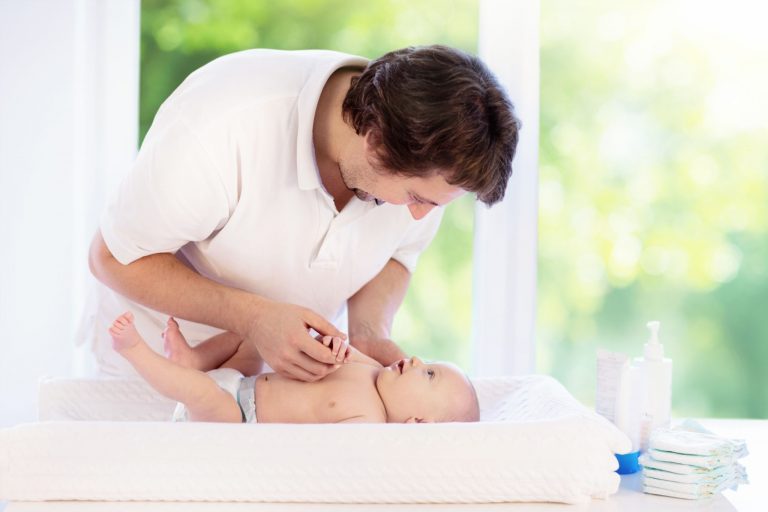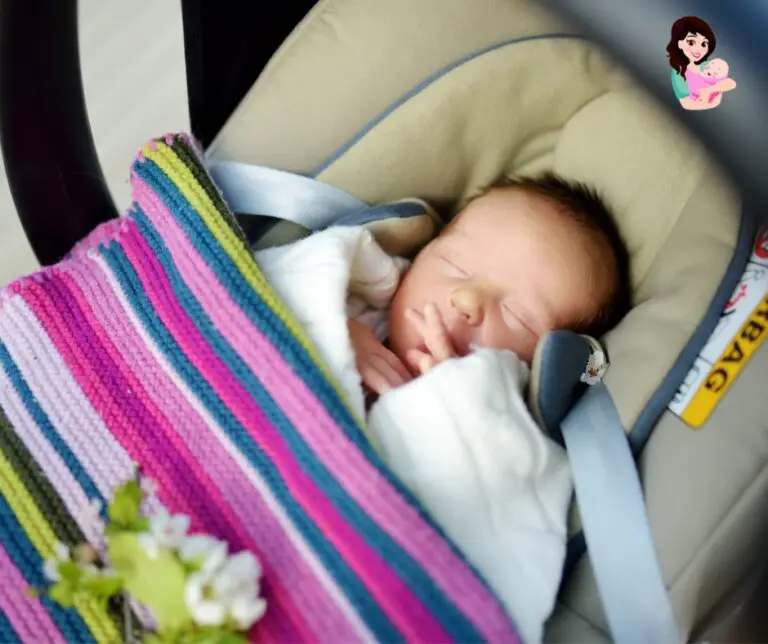
Infants love looking around at their world; it’s practically the first thing they learn to do. Because of this, most parents want to allow their baby to see everything – especially when strapped into a car seat. However, in safety-conscious times, parents (and, more importantly, some experts) ask: How long should a baby have to sit backward in a car seat?
The American Academy of Pediatrics (AAP) recommends that children ride rear-facing until age two or until they outgrow the height and weight limits of their convertible seat.
While it may seem like ages, babies only need to stay rear-facing until they reach the age requirements of their car seat (or two years old, whichever comes first). After reaching these milestones and transitioning to forward-facing seats, parents can still keep their children safe by installing car seats correctly with harness straps at or below shoulder level.
Why Do Babies Ride Backwards?
Babies ride backward in car seats because they are safer that way. Many parents are surprised to learn that their baby should ride backward in a car seat. But it’s true: The safest place for your child is facing the back of the car, not the front.
Riding in a car seat facing backward is a way to protect your child’s neck and head. They are more vulnerable than adults, so they need extra protection when riding in a car. A baby’s spine is also very delicate, and it needs to be supported by being upright and straight if possible.
In a rear-facing car seat, your baby’s head is protected by the car seat itself. If you’re in an accident, babies’ heads will stay aligned with their spine and neck, so they don’t get injured by whiplash or other neck injuries. A rear-facing baby also has more protection from side impacts than a forward-facing baby.
In addition, if your child were to turn around while facing forward, she would be exposed to more airbag damage than if she were facing backward and could be injured by the force of impact.
When Can a Baby Face Forward in a Car Seat?
Most babies can ride facing forward as soon as they’re big enough. But the American Academy of Pediatrics recommends keeping your baby rear-facing until they’re at least two years old (or until they reach the maximum height and weight for their car seat).
Keep in mind that every child is different. Most children are ready to face forward at six months of age and up, but it’s important that they can sit upright without slouching. The child also needs to be able to keep their head in line with the spine, not tilted back or forward.
The AAP also says that if you have any concerns about your child’s growth or development, talk with your pediatrician before making any changes to how your child rides in the car.
When you feel confident about moving your infant into a forward-facing position, ensure his harness straps fit snugly around his shoulders and hips, with no slack left between them, when he sits upright against the backseat headrests. It’s also important that any soft toys or objects used for head support be placed behind (never in front) him, so they don’t interfere with his airway while traveling.
The best way to know if your child is ready to face forward is by using the steps below:
Check your car seat manufacturer’s recommendations
If you have a car seat made by a reputable manufacturer, the manual will tell you which age range your child should use their product safely and correctly in a rear-facing position.
Most manufacturers specify a child can face forward once they reach the age requirements of their particular product and weigh at least 20 pounds or are at least one year old (sometimes both).
Some manufacturers allow babies to face forward as early as six months old if they have reached these weight and age marks and have excellent head control.
Many manufacturers list this information on their websites as well. You can search for “rear-facing car seat recommendations” along with your model number (or name) for more details about when it’s time for kids to move forward-facing in your vehicle.
Check your child’s height/weight
The height and weight limits given by most car seat manufacturers will help determine whether or not your baby is ready to sit independently without being strapped into anything behind them when traveling by car; however, these numbers don’t necessarily mean anything unless they’re used right alongside other factors like head size and neck strength which can vary among kids too.
When Can Children Sit in the Front Seat?
Children should only ride in the front seat of a car when they are 13. This is because they are more vulnerable to crash injuries and their developing bones, muscles, and reflexes are not yet fully developed.
If your child is too big for a rear-facing car seat but not big enough to fit in a booster seat, you may consider switching to a forward-facing car seat that converts from rear-facing to forward-facing.
Seat belts and airbags are standard in most vehicles. Car manufacturers initially created these mandatory safety features to safeguard adults in the case of a collision. They might not be as effective at defending a kid in the front seat.
In addition, most states and Canadian provinces have laws requiring children under 13 to be restrained in the back seat. However, there are exceptions for older children who weigh at least 80 pounds (36 kilograms) or are 4 feet 9 inches tall (1.45 meters). Many states limit these exceptions to children at least eight years old.
Conclusion
So now you know. The American Academy of Pediatrics says that babies should ride facing the rear until the age of two, but certainly no longer than a year. At the age of two, they can begin riding in forward-facing car seats but should be switched to a booster seat once they’ve reached the weight and height limit of the seat. And always make sure that your child is buckled up properly before you get on your way.

Hi, This is Emma Baster; As a mom, I spend my free time caring for my kids. I’ve read a lot on the Internet to improve my childcare skill and bring the best to my kids. Eruditemommy shares my knowledge and experience through helpful posts. I hope you enjoy them!







